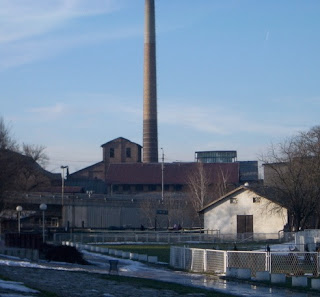Going on with the series about the beautiful monasteries of the Fruska Gora (the
only mount of the extended flat Vojvodina region in the National Park
of Fruska Gora which is also a well know tourist destination). The links
to the first 4 monasteries of the series (Velika Remeta, Novo Hapovo, Krusedol and Jazak) are on the bottom of this post.
The Beocin Monastery (Манастир Беочин).
The Beočin Monastery, whose church is dedicated to the Resurrection of
Christ, lies on the northern slope of Mount Fruška Gora, near the road
to Beočin. Its history can be traced back to the mid-sixteenth century,
when the Monastery was mentioned for the first time in a Turkish defter.
Under Arsenije III Čarnojević, it was renovated by monks of the Rača Monastery. Construction of today’s church begun in 1732, and it was enabled through donations of Milivoje Milaković from Futog, and his son Petar from Gložane. The church was completed in 1799, when the baroque crown was placed on top of the belfry.
The church (post Byzantine style with Moravian influence) of the Beočin Monastery was designed as a single-nave, elongated building, whose altar apse is seven-sided on the outside, and semi-circular on the inside, and with rectangular choirs.
The high, octagonal dome is supported by four free-standing pillars. Above an open, arcaded and rib-vaulted porch, soars a two-storied belfry. The western façade of the church is dominated by the stone portal with sculptured frame.
The high, lavishly gilded baroque iconostasis is the joint work of Janko Halkozović, Dimitrije Bačević and Teodor Dimitrijević. The fresco painting is, unfortunately, almost completely destroyed, save for the scene of the Dormition of the Virgin on the north wall. The church of the Beočin Monastery is on its southern and western sides enclosed by monks’ dwelling-houses, which were eventually joined together in 1765. Systematic restoration of the Monastery complex was begun in 1986.
(The text,slightly adapted, and the cover picture are from Spomenici kulture u Srbiji)
Travel Tips:
Fruska Gora Monasteries Overview
Velika Remeta Monastery in Fruska Gora
Novo Hapovo Monastery in Fruska Gora
Krusedol Monastery in Fruska Gora
Jazak Monastery in Fruska Gora
Velika Remeta Monastery in Fruska Gora
Novo Hapovo Monastery in Fruska Gora
Krusedol Monastery in Fruska Gora
Jazak Monastery in Fruska Gora
















